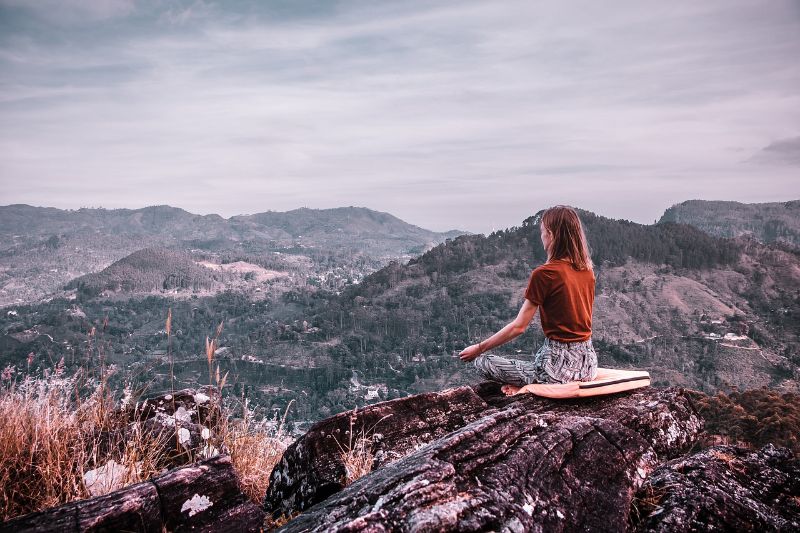Most people associate a bath with a warm, relaxing tub filled with water, candles, a glass of their favorite beverage, and soothing music; however, a spiritual bath is quite different.
Before You Continue...
Do you know what is your soul number? Take this quick quiz to find out! Get a personalized numerology report, and discover how you can unlock your fullest spiritual potential. Start the quiz now!
You may be unfamiliar with the concept of a spiritual bath, but don't worry. Many individuals were unaware that such a thing existed. You can take a spiritual bath in a variety of ways. If you've ever taken the time to soak in a bath for reasons other than getting clean, you've probably already made the first steps toward one of them.
Many cultures have used spiritual baths to cleanse the soul, purify the mind, and eventually cure the chakras with the goal of healing the spirit. A spiritual bath is claimed to aid in the removal of any blockages that may lead to more serious ailments.
A clean and clutter-free tub is the foundation of these baths. Many civilizations regard water as sacred and pure. Herbs, flowers, incense, and, most importantly, an intention and prayer are all included in the bath. The time spent in the tub should be spent without the presence of a phone or laptop. It's time to unplug and focus on your spiritual healing from inside.
The majority of people set out with the intention of clearing paths and removing unfavorable conditions that have been holding them back. Cleaning the spirit is a great way to attract optimism, and it's also calming.
There is no one-size-fits-all method for taking a spiritual bath. Each bath is prepared and tailored to the needs of the person, however if you need some help, there are some procedures that others have done to produce a wonderful spiritual bath experience listed below.
- Take a shower before soaking because this will clean you and the bath's sole purpose will be to relax and clear the obstructions.
- Make sure the tub you're using is clean and comfortable. For this time, make the bathroom your sacred domain. Candles should be lit, and aromatherapy oils and/or incense should be burned.
- Make a decision about the bath's purpose. You will receive the same amount of energy that you put into this bath.
- Fill the tub halfway with clean water and add your ingredients, such as oils, flowers, and Himalayan sea salt, if desired.
- The therapeutic benefits of Himalayan sea salts are well-known, as is their capacity to extract toxins and impurities from the body.
- You can opt to be in solitude, meditate, or listen to soothing music.
It's all up to you. Anyone can benefit from spiritual baths. Taking only a few minutes out of your day to relax and rebalance your life can be quite beneficial. It's vital to take time for ourselves if we're feeling overwhelmed, so a break like this might be beneficial. This is something you might want to incorporate into your weekly routine or into your self-care day.
What do you put in a spiritual bath?
Natural salt is one of the most effective ingredients for clearing your energies of any negative junk. Pink Himalayan salt, natural sea salt, and Epsom salt are all excellent choices that are widely available. Regular table salts should never be used since they contain anti-caking chemicals and have been refined to remove many of the useful minerals. Use no more than a couple of nice handfuls.
What was used for ritual bathing?
Baptism (q.v.) can have several forms, ranging from total immersion to a symbolic sprinkle, and shows how different ritual baths can have different forms while still having the same purificational intent. The bath and the site often have mutually reinforcing symbolic implications, as in the trthaytr (see trtha), the traditional Hindu pilgrimage bath in a sacred river or stream, or the upanayana (q.v.), the Hindu rite of initiation before a young man's teacher.
What is a white bath?
White baths are a form of spiritual wash designed to chill, cleanse, rejuvenate, and revive the mind, crown, and “ori.” They're especially common in Yoruba and Fon cultures. Because of their efficiency and effectiveness, many Hoodoo and other ATR believers have recently adopted them.
What can I put in my bath to detox?
A detox bath is a natural approach to aid in the removal of toxins from the body. Ingredients like Epsom salt (magnesium sulfate), ginger, and essential oils are dissolved in warm water in the bathtub during a detox bath. You can soak for as little as 12 minutes or as long as an hour at a time.
A detox bath could be used to treat a cold, for example. However, research on the advantages of detox baths for a cold is sparse. Detox baths may assist with cold symptoms by soothing the body and relieving muscle aches, but outcomes will vary depending on the individual.
Continue reading to learn more about using a detox bath to treat cold symptoms, as well as how to utilize a detox bath.
What does bathing with salt do?
Muscle pain is relieved, and circulation is improved. Another advantage of taking a sea salt bath is that it stimulates circulation. Muscle cramps are relieved. assisting in the relief of joint stiffness
What does a vinegar bath do for females?
ACV (apple cider vinegar) in its raw form may offer a number of health benefits. It's frequently advertised as a natural cure-all. You may have heard that it can help with weight loss, infections, diabetes, and other ailments.
ACV can also help with a range of skin issues, and adding it to your bath can help you improve your skin care routine. It has strong antibacterial characteristics that may aid in the treatment of skin infections and discomfort.
ACV, as a moderate acid, may also aid in the restoration of your skin's natural pH equilibrium. This keeps moisture in and irritants out of your skin.
Continue reading to find out what the science says about using ACV for various ailments and how an ACV bath can help you feel better.
How long should you stay in a bath?
In general, a bath should not last more than 30 minutes at the most. The average exposure time is 15-30 minutes, with longer exposure generating severe dry skin, which causes agitation, irritation, and bacteria growth, all of which pose health problems. A longer soak, on the other hand, greatly increases the normal benefits, including as stress relaxation, muscle and soreness relief, reduced blood pressure, and improved airflow through the lungs. However, this comes with the danger of drying out your skin, with wrinkling fingers being a strong indicator that it's time to get out of the bath. Bath salts are a great help for the benefits described above, but you're just adding salt to your water, which has the same effectyour skin will dry out even faster. So, if you're going to use bath salts and soak for a longer period of time, make sure you moisturize first to avoid cracking and drying out your skin. It's also a good idea to keep yourself hydrated.
What should you put in your bath water?
Ingredients for the Best Bath
- Epsom salt is a kind of magnesium sulfate that Epsom salt can be used to almost any bath salts recipe to help relieve muscle stiffness and tension.
What is cleansing ritual?
Ceremonial purity is the state of ritual cleanliness, and process cleansing is the ritual provided by a religion by which a person is regarded free of uncleanliness, especially preparatory to the worship of a deity. Purification rituals can also be used to purify objects and places. Although ritual uncleanliness differs from common physical impurity, such as dirt stains, body fluids are often regarded as ritually unclean.
The majority of these rituals predate the germ hypothesis of sickness and can be found in the earliest known religious systems of the Ancient Near East. Some authors associate the ceremonies with taboos.
Some have considered these behaviors as a point of health and infection prevention, particularly in regions where people come into close contact.
While these practices predate the popular acceptance of the germ theory, the destruction of infectious agents appears to be spectacular in regions where everyday cleaning is practiced. Others have proposed a universal ‘dimension of purity' in religions that aims to steer humanity away from distaste (at one extreme) and towards purity and divinity (at the other) (at the other extreme). (Within one's cultural setting) from uncleanliness to purity, and from deviant to moral behavior.




